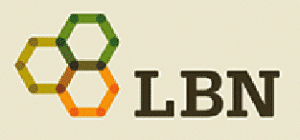 LIVESTOCK producers have been reminded to consider biosecurity risks and strategies in the event of a bushfire.
LIVESTOCK producers have been reminded to consider biosecurity risks and strategies in the event of a bushfire.
The Livestock Biosecurity Network (LBN) today reminded livestock producers of the steps they can take to be prepared and reduce their biosecurity risks.
LBN’s Biosecurity and Extension Manager, Dr Pat Kluver, said on-farm biosecurity risks can often be overlooked when preparing for a more severe than usual bushfire season.
“Australian farmers are familiar with preparing for bushfires, floods and droughts, but we often forget natural disasters can also bring the threat of introduced pests, weeds and diseases.
“To start with, identify the low-risk areas where you know you can leave stock safely. These are places that are bare or have been prepared for bushfire season with fire breaks, hard grazing or slashing,” he said.
“Consider areas like containment lots, yards or even tennis courts, and ensure adequate water for at least a few days.”
Biosecurity plan
LBN said a property’s biosecurity plan should include assessing the danger of moving stock when a fire is close. Cutting internal fences may be the only option, and central laneways will aid movement of stock all year round and during a fire.
Ensure all cattle, sheep and goats are identified with a National Livestock Identification System (NLIS) compliant tag and linked to the property identification code (PIC). This allows for animals to be easily identified and returned if they get lost during the emergency.
Emergency agistment options should be considered to give producers the option of moving animals off burnt ground quickly.
If animals have been away on agistment or stray off the property, be sure to monitor their health closely and treat them like any new stock upon their return.
Strays from neighbours can also be a biosecurity risk as they may introduce unwanted parasites and weeds. Follow recommended biosecurity practices of keeping stray stock separate from your own where possible. NLIS tags will help trace the animals.
Following a fire, fodder drives of donated hay and grain are common but it is still important to ask for a Commodity Vendor Declaration form. Bringing in feed carries the risk of introducing weeds, pests and chemical contaminants. When distributing feed, place it out in a narrow and defined area to make it easier to control and contain any new pests or weeds.
Seek help for injured livestock
If stock are injured during a fire, seek professional help from an experienced vet or animal health officer to assess stock as soon as possible. This minimises the suffering of unsalvageable stock, but also prevents the unnecessary destruction of animals that can be saved.
For dead animals, dispose of carcasses correctly to prevent contamination of water and soil, and keep them out of reach of scavenging animals.
Dr Kluver said emergencies are a costly and shocking reminder of why good biosecurity practices and systems are so important.
“Get on the front foot and develop a biosecurity plan this bushfire season – it’s better to be safe than sorry.”
For more information visit www.lbn.org.au



HAVE YOUR SAY